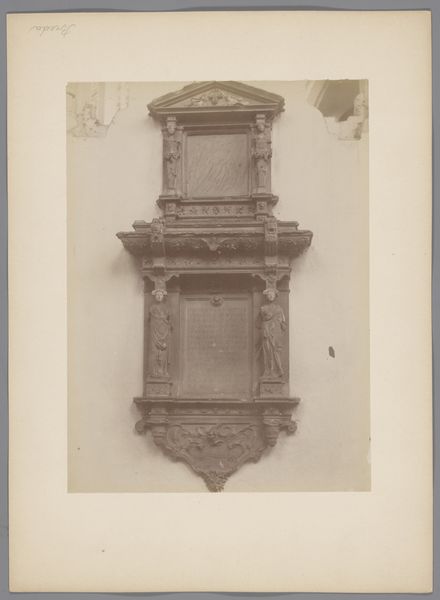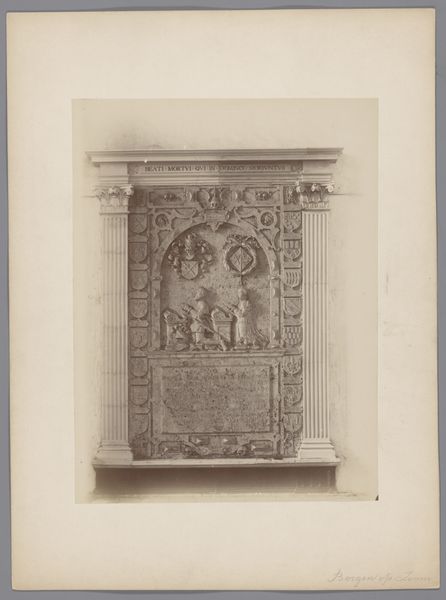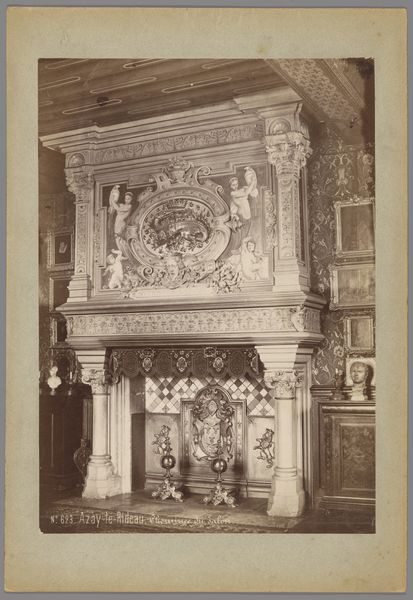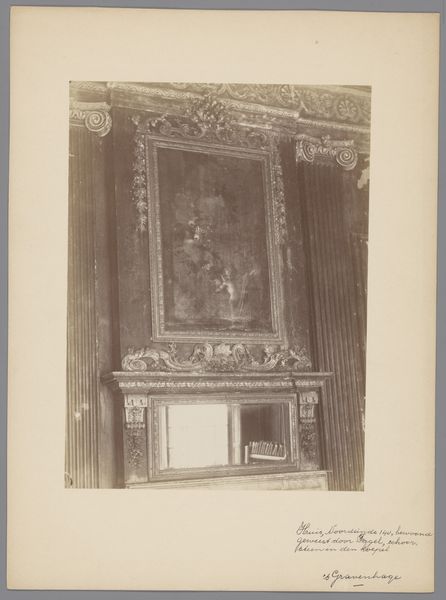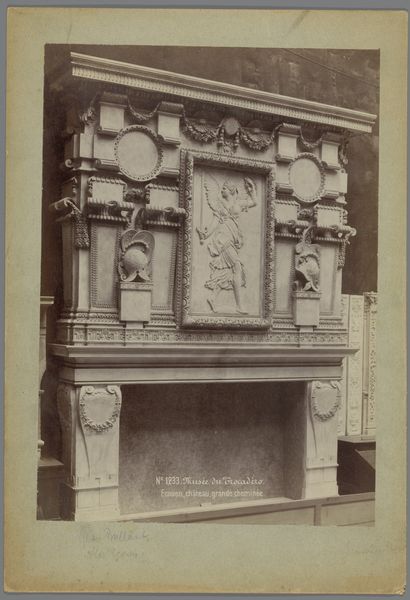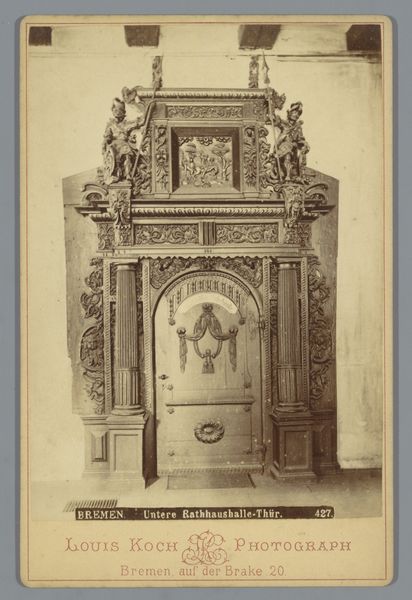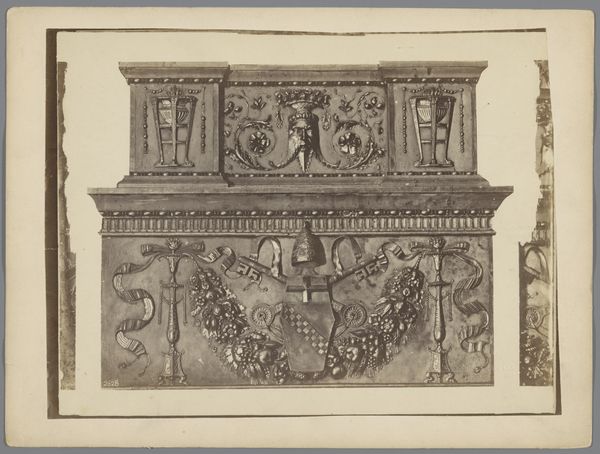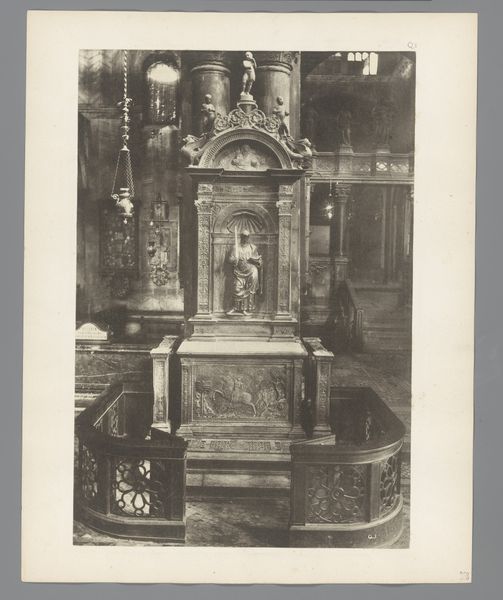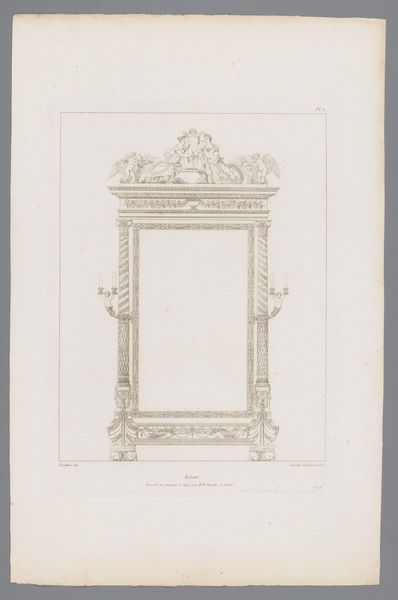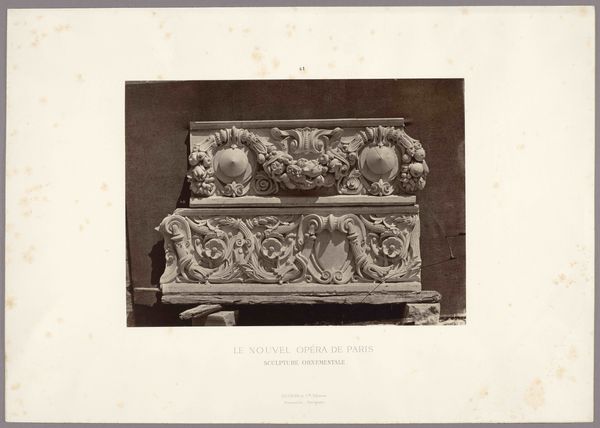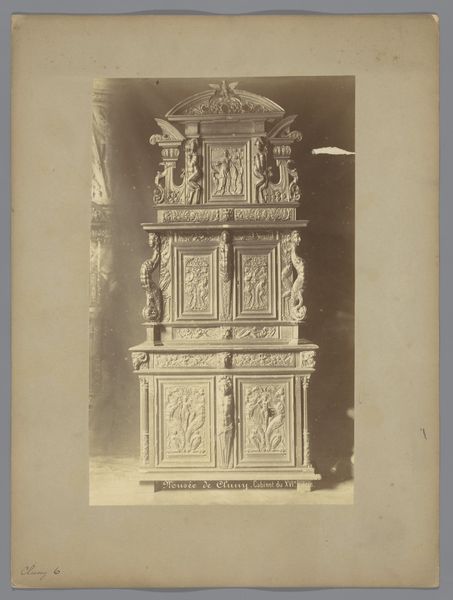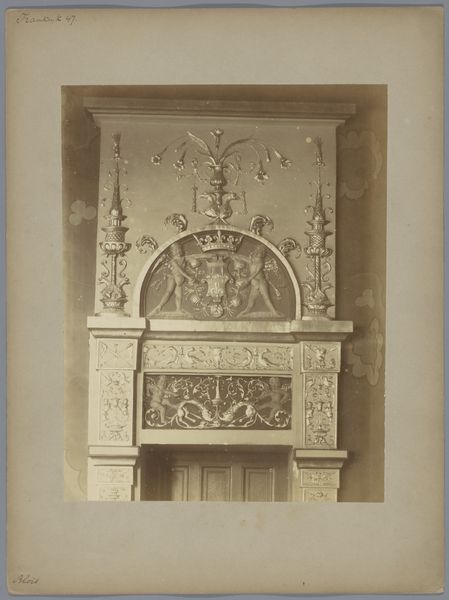
Wapenschild van Filips de Goede in de Grote of Sint-Jacobskerk te Den Haag 1890 - 1910
0:00
0:00
Dimensions: height 232 mm, width 173 mm
Copyright: Rijks Museum: Open Domain
Curator: Let's consider this rather formal photograph, "Wapenschild van Filips de Goede in de Grote of Sint-Jacobskerk te Den Haag," dating from around 1890-1910. It seems to depict a funerary hatchment. Editor: It projects such an imposing, melancholic mood. The subdued lighting and the detailed ornamentation…it feels very somber, almost foreboding. What can you tell me about it? Curator: Well, it is catalogued as a photograph taken within the Grote Kerk, or St. James' Church in The Hague. The hatchment commemorates Philip the Good, Duke of Burgundy, which situates this memorial firmly within Burgundian history and Dutch cultural memory. Editor: Burgundy and the Netherlands – an interesting intersection. It strikes me how these symbols of power are, in a sense, reclaimed over time, and used to forge cultural identities that didn’t necessarily exist in Phillip's lifetime. What was the public function of these monuments at the time they were built and photographed? Curator: In the late 19th and early 20th centuries, when this photograph was taken, such images served a few purposes. Primarily, to document, and perhaps enshrine, historical legacies for both preservation and patriotic projects. They were accessible to a limited, generally affluent audience and, in some cases, functioned as propaganda or instruments in service of social hierarchies. Editor: Seeing the grandeur of Philip’s coat of arms displayed like this in the Church is striking. I'm curious to know, could its placement and elaborate design inadvertently speak to issues of power, exclusion, or social status, especially during this later time period when ideas about representation were in flux? Curator: Absolutely, the very permanence of this hatchment implies the longevity of the social order. At a time when society was evolving rapidly, monuments such as this offered both reassurance for those who benefitted from a specific system but perhaps also reminded others of the unfulfilled promises of true equity and representation. Editor: That makes me consider how archives and collections were gathered, managed, and how the public interacted with this form of commemorative material. I suppose we will need to do further investigation. Curator: Exactly! It provokes thought, doesn't it?
Comments
No comments
Be the first to comment and join the conversation on the ultimate creative platform.


